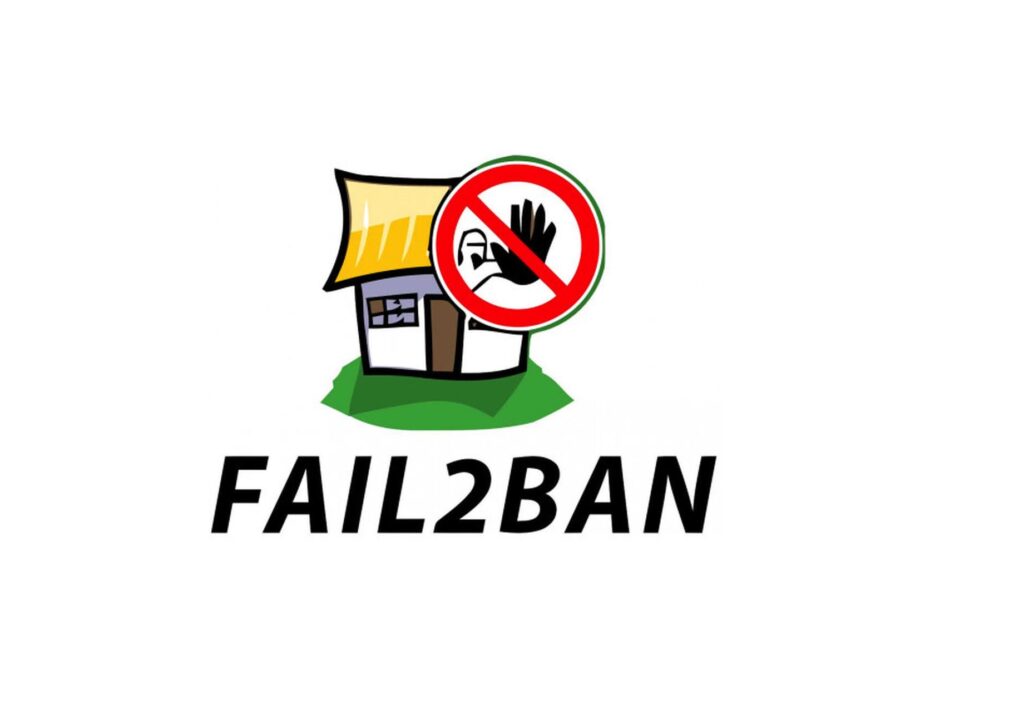
Introduction
Fail2Ban works by monitoring server log files to detect IP addresses that exhibit malicious behavior, such as repeated failed login attempts or known attack patterns. When such behavior is detected, Fail2Ban can automatically block the offending IP address for a specified period of time. However, in certain situations, you might know in advance that a specific IP address poses a threat or is responsible for consistent issues. In these cases, manually blocking the IP address can be a more proactive approach to securing your server.
Why IP Blocking with Fail2Ban?
While Fail2Ban’s automatic detection and blocking capabilities are powerful, there are scenarios where manual intervention is required to enhance security. Manually blocking an IP address with Fail2Ban provides an additional layer of protection, especially when dealing with persistent or known threats. For example, if you are aware that a certain IP address is consistently trying to breach your server’s defenses, or if you’ve identified a source of malicious traffic through your own analysis, manual blocking ensures that this traffic is immediately halted.
How to Use It?
The process of manually blocking an IP address using Fail2Ban is straightforward, but it requires careful attention to detail to ensure that the correct IP address is targeted and that the block is effectively implemented. Below are the steps to manually block an IP address using Fail2Ban:
- Check Fail2Ban Service: The first step is to verify that the Fail2Ban service is running on your server. This is crucial because Fail2Ban must be active to enforce any blocking rules. You can check the status of Fail2Ban with the following command:
sudo systemctl status fail2ban
- Identify the IP Address You Want to Block: Next, identify the IP address that you want to block. This might be an IP address that you’ve noticed in your server logs, or one that you’ve identified as part of a known attack pattern. Make sure to double-check the IP address to avoid mistakenly blocking a legitimate user.
- IP Blocking Using Fail2Ban CLI: Once you have identified the IP address to block, you can use Fail2Ban’s command line tool,
fail2ban-client, to enforce the block. For example, if you want to block an IP address for thesshdjail, which monitors SSH login attempts, you would use the following command:
sudo fail2ban-client set sshd banip IP_ADDRESS
- In this command,
IP_ADDRESSshould be replaced with the actual IP address you want to block. This command will immediately block the specified IP address for thesshdjail, preventing any further SSH login attempts from that IP. - Check the Blocking: To confirm that the IP address has been successfully blocked, you can check the status of the jail and list the blocked IP addresses using the following command:
sudo fail2ban-client status sshd
- This command will display the status of the
sshdjail, including a list of all IP addresses that have been blocked. If the IP address you targeted is listed, then the block was successful.
What Are Its Components?
Fail2Ban operates through a set of core components, each playing a vital role in the detection and blocking process:
- Jails: Jails are the cornerstone of Fail2Ban’s configuration. Each jail is designed to monitor a specific service or application, such as SSH, Apache, or Postfix. Within each jail, rules are defined for what constitutes suspicious behavior and how to respond, including blocking offending IP addresses.
- Filters: Filters are the patterns that Fail2Ban uses to detect malicious behavior. These patterns are defined in regular expression (regex) format and are used to scan log files for signs of attacks or other suspicious activities. If a pattern match is found, the corresponding action is triggered.
- Actions: Actions define what happens when a filter identifies malicious behavior. In the context of manual IP blocking, the action would be to immediately ban the identified IP address, preventing it from accessing the server.
Why Is It Important?
Manual IP blocking with Fail2Ban is an essential tool in the server administrator’s security arsenal. It allows for quick and decisive action against specific threats, ensuring that known malicious actors are immediately neutralized. This level of control is especially important in scenarios where automated systems may not be sufficient to handle the complexity or severity of the threat. By manually blocking IP addresses, administrators can tailor their security measures to address the unique challenges their servers face.
Conclusion
Fail2Ban is more than just an automated tool for blocking suspicious IP addresses; it also provides administrators with the flexibility to manually enforce security measures as needed. Whether you’re dealing with a persistent threat or simply want to preemptively block an IP address known for malicious activity, Fail2Ban’s manual IP blocking feature is an invaluable resource. By leveraging this capability, you can ensure that your server remains secure, even against the most persistent attackers.
Fail2Ban is a tool designed to protect servers from automated attacks by automatically blocking IP addresses engaged in malicious activity. However, there are times when you may need to manually block a specific IP address to ensure security. This task can be accomplished using Fail2Ban’s command line interface (CLI). In this article, we’ll walk through the detailed process of manually blocking an IP address with Fail2Ban. For more details, you can visit How to Block IP with Fail2Ban?.

Introduction
Fail2Ban works by monitoring server log files to detect IP addresses that exhibit malicious behavior, such as repeated failed login attempts or known attack patterns. When such behavior is detected, Fail2Ban can automatically block the offending IP address for a specified period of time. However, in certain situations, you might know in advance that a specific IP address poses a threat or is responsible for consistent issues. In these cases, manually blocking the IP address can be a more proactive approach to securing your server.
Why IP Blocking with Fail2Ban?
While Fail2Ban’s automatic detection and blocking capabilities are powerful, there are scenarios where manual intervention is required to enhance security. Manually blocking an IP address with Fail2Ban provides an additional layer of protection, especially when dealing with persistent or known threats. For example, if you are aware that a certain IP address is consistently trying to breach your server’s defenses, or if you’ve identified a source of malicious traffic through your own analysis, manual blocking ensures that this traffic is immediately halted.
How to Use It?
The process of manually blocking an IP address using Fail2Ban is straightforward, but it requires careful attention to detail to ensure that the correct IP address is targeted and that the block is effectively implemented. Below are the steps to manually block an IP address using Fail2Ban:
- Check Fail2Ban Service: The first step is to verify that the Fail2Ban service is running on your server. This is crucial because Fail2Ban must be active to enforce any blocking rules. You can check the status of Fail2Ban with the following command:
sudo systemctl status fail2ban
- Identify the IP Address You Want to Block: Next, identify the IP address that you want to block. This might be an IP address that you’ve noticed in your server logs, or one that you’ve identified as part of a known attack pattern. Make sure to double-check the IP address to avoid mistakenly blocking a legitimate user.
- IP Blocking Using Fail2Ban CLI: Once you have identified the IP address to block, you can use Fail2Ban’s command line tool,
fail2ban-client, to enforce the block. For example, if you want to block an IP address for thesshdjail, which monitors SSH login attempts, you would use the following command:
sudo fail2ban-client set sshd banip IP_ADDRESS
- In this command,
IP_ADDRESSshould be replaced with the actual IP address you want to block. This command will immediately block the specified IP address for thesshdjail, preventing any further SSH login attempts from that IP. - Check the Blocking: To confirm that the IP address has been successfully blocked, you can check the status of the jail and list the blocked IP addresses using the following command:
sudo fail2ban-client status sshd
- This command will display the status of the
sshdjail, including a list of all IP addresses that have been blocked. If the IP address you targeted is listed, then the block was successful.
What Are Its Components?
Fail2Ban operates through a set of core components, each playing a vital role in the detection and blocking process:
- Jails: Jails are the cornerstone of Fail2Ban’s configuration. Each jail is designed to monitor a specific service or application, such as SSH, Apache, or Postfix. Within each jail, rules are defined for what constitutes suspicious behavior and how to respond, including blocking offending IP addresses.
- Filters: Filters are the patterns that Fail2Ban uses to detect malicious behavior. These patterns are defined in regular expression (regex) format and are used to scan log files for signs of attacks or other suspicious activities. If a pattern match is found, the corresponding action is triggered.
- Actions: Actions define what happens when a filter identifies malicious behavior. In the context of manual IP blocking, the action would be to immediately ban the identified IP address, preventing it from accessing the server.
Why Is It Important?
Manual IP blocking with Fail2Ban is an essential tool in the server administrator’s security arsenal. It allows for quick and decisive action against specific threats, ensuring that known malicious actors are immediately neutralized. This level of control is especially important in scenarios where automated systems may not be sufficient to handle the complexity or severity of the threat. By manually blocking IP addresses, administrators can tailor their security measures to address the unique challenges their servers face.
Conclusion
Fail2Ban is more than just an automated tool for blocking suspicious IP addresses; it also provides administrators with the flexibility to manually enforce security measures as needed. Whether you’re dealing with a persistent threat or simply want to preemptively block an IP address known for malicious activity, Fail2Ban’s manual IP blocking feature is an invaluable resource. By leveraging this capability, you can ensure that your server remains secure, even against the most persistent attackers.




